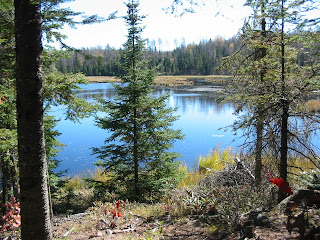It is rare to find the actual corner. While still uncommon, it is more likely that we will find a corner accessory. A corner accessory is something else that the original surveyors left behind to help future surveyors locate the corner position.
The most common accessory is a bearing tree. These trees were marked to tell future surveyors where the corner was in relation to them. These typically lasted much longer than the actual corner since they were a living tree.
The original surveyors would blaze the tree (take the bark off until they exposed the living wood of the tree) and then scribe the bearing and distance from the tree to the corner. The pitch would then seep over the blaze and scribe and preserve it. If you find a living an original bearing tree today you could peel off the bark and find the scribing exactly as it was when it was originally scribed.
 |
| This is the remnants of an original bearing tree |
This may look obvious, but it is rare. It takes perfect conditions for a bearing tree to survive like this one did. Most likely we will find something like this.
It is just an old rotting stump, but upon closer inspection, you can see the remnants of a scribe as shown below.
If you look closely you can see a definite scribe mark on the right hand side of this stump. There is not much left, but we found another stump, that also fit the measurements from the original survey. It does not seem like much, but on the other hand, why would anyone go into the middle of a swamp in the woods and blaze and scribe a tree?
The only people I know of that would do something that odd would be surveyors.











